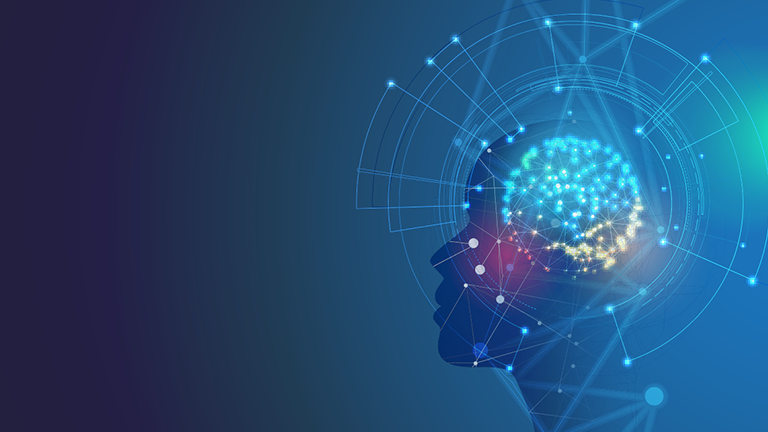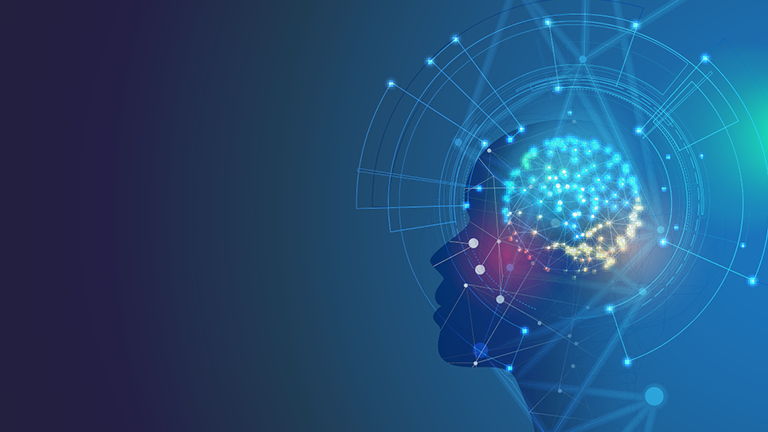Artificial intelligence or AI refers to computer systems that are intended to think and act intelligently like humans. With origins dating back to the 1950s, the goals of AI include learning, reasoning, problem-solving, perception, and using language – in order to imitate human cognition and behavior patterns.
AI capabilities fall into two main categories — Narrow AI and Artificial General Intelligence.
Narrow AI, also called weak AI, refers to AI systems focused on single specific tasks — governed by constraints. Virtual personal assistants, self-driving cars, and speech recognition software are few examples. While excelling at one function, narrow AI lacks generalized human cognitive abilities.
Artificial General Intelligence, also known as strong AI, aims to develop systems that exhibit human-level intelligence and adaptability across a range of functions. Recreating abilities such as reasoning, learning, and problem solving across domains is the end goal.
Modern AI leverages machine learning techniques where algorithms are trained using large amounts of data rather than explicitly programmed for certain outcomes. By analyzing thousands of examples, machine learning models can derive insights dynamically without relying on rule-based programming. These data-driven models facilitate pattern recognition and adaptation for use cases such as personalization, predictions, optimizations, and classifications.
As computational power grows exponentially, AI powered by robust algorithms and plentiful data promises to revolutionize every industry and reshape humanity’s future more profoundly than any prior technology innovation.
Ready for Growth? GEP Has the Answers
Transform your business with our AI-powered procurement and supply chain software and services
What is AI in Procurement?
Artificial intelligence (AI) is transforming procurement operations to derive deeper insights, automate tactical tasks, and enable data-driven decision making. Powerful algorithms help digest big data from multiple sources across the source-to-pay process including historic prices, supplier credentials, contracts, supply market news, quality trends and operational data flows.
By applying real-time pattern recognition and predictive analytics, artificial intelligence procurement software can spotlight opportunities to refine demand planning, tailor purchasing recommendations, select optimal suppliers through competitive scenarios modeling, sharpen negotiation strategies with predictive price forecasting, fine-tune logistics networks, identify fraud risks and more.
Types of AI in Procurement
AI can strategically augment human analysis on exceptions, trends and simulations that guide strategic direction. By continually crunching expansive data volumes impossible for linear human assessment, AI shifts procurement teams from reactive responses toward proactive, insight-led decisions and risk mitigation approach.
Here are some of the main types of AI that are transforming procurement functions:
Predictive Analytics
Predictive analytics embedded in AI procurement platform can analyze massive amounts of structured and unstructured data to identify trends and patterns, and make predictions to prescribe actions. It also enables data-driven forecasting, risk insights, optimizations.
Machine Learning
Self-learning algorithms can significantly improve analysis and decision-making abilities over time. Procurement use cases include contract auto-categorization, personalized recommendations, risk profiling, analysis automation.
Natural Language Processing
NLP enables computer systems to understand, interpret, and generate human languages. It’s used in procurement chatbots, supplier discovery based on capability descriptions, extracting insights from documents.
Robotic Process Automation (RPA)
AI software bots automate repetitive, rules-based procurement tasks efficiently, including invoice processing, contract extraction, onboarding tasks.
Simulation and Optimization
AI can leverage computational models and scenarios to prescribe optimized actions quantitatively. This, in turn, supports spend allocation decisions, demand planning, auctions.
Computer Vision
AI procurement technology can process and analyze visual data for spend analytics, inventory management via drone imagery, logistic bottlenecks.
As AI capabilities grow more sophisticated and specific to use case scenarios, integrating predictive, prescriptive and autonomous intelligence can help enterprises unlock efficiency, insights and value across the source-to-pay cycle.
Benefits of AI in Procurement
The transformational potential of artificial intelligence across procurement is immense. As AI adoption gathers momentum, leading enterprises are deploying intelligent algorithms and deep learning systems to unlock value within the source-to-pay (S2P) process.
The quantitative and qualitative benefits of AI in procurement span enhanced insights, accelerated cycles, improved compliance, risk reduction and more.
Enhanced Data-Driven Decision Making
By crunching vast amounts of data from disparate sources, AI/ML procurement technology can support fact-based decisions on supplier selection, spend management, forecasts rather than intuition.
Risk Mitigation
Risk Mitigation Identifying patterns, anomalies, and market variables enable procurement AI to proactively highlight financial, operational, geopolitical risks across suppliers.
Complex Optimizations
AI algorithms can rapidly simulate multitude of procurement scenarios factoring in hundreds of constraints to prescribe actions. Benefits demand planning and auctions.
Higher Efficiency
Automating repetitive, manually intensive tasks such as contract extraction, invoice processing, asset tracking with AI bots improves productivity.
Deeper Market Insights
Natural language processing or NLP breaks down unstructured data like news, reviews, reports to discover real-time insights for category management.
Augmented Expertise
Predictive analytics and tailored recommendations amplify the efforts of seasoned category managers by providing data-backed prompts on savings levers.
As AI capabilities advance and deployment gains maturity, the benefits too would grow, with procurement organizations realizing double-digit enhancements in cycle times, compliance, working capital efficiencies over current operations.
Don’t Let Procurement Become a Hidden Barrier and Hold You Back
Explore how leading firms are using AI to transform procurement into a strategic driver of expansion
Best Practices for AI in Procurement
Artificial intelligence can significantly enhance procurement efficiency, uncover hidden insights across the source-to-pay cycle, and elevate supply chain performance. However, to achieve the full benefits of this exponential technology, procurement organizations need an integrated strategy covering robust processes, capable talent, and systems — combined with change management best practices to drive adoption across teams and suppliers. A phased, metrics-driven approach focused on specific pain points and use cases enables measurable value. But AI success ultimately relies on cross-functional coordination, continuous improvement, and sustained leadership commitment regarding People, Process and Technology.
Here are some of the best practices that can be adopted easily across the enterprise:
Focus on Specific Pain Points
Rather than vague AI implementations, CPOs should direct teams to identify high-potential use cases providing tangible value such as automated invoice processing, improved demand forecasts, personalized alerts for buyers on atypical requisitions, etc. Properly defined processes and metrics aid swift ROI justification for AI investments, while building internal confidence.
Start Small, Scale Up
Enterprises need to first launch targeted AI proof of concepts or pilots focused on no more than a couple of specific pain points. It’s best to limit scope, run controlled tests and fine-tune algorithms before expanding to other opportunities. And before they go full steam into broader applications, enterprises need to get their calculations right with measurable gains.
Continuously Train the Algorithms
At its essence, AI refers to smart algorithms getting better with more data and learning. To sustain value delivery, procurement AI systems need continuous data feeds — such as invoices, quality codes, commodity news alerts, etc. — to train prediction engines. Clean, correctly tagged data structures allow self-learning bots to keep raising the bar. Most importantly, enterprises need to involve data governance teams to maintain this hygiene.
Reskill and Augment Your Team
As AI takes over rules-based tasks, the procurement skills profile requires strategic reorientation. And as digital and analytics capabilities rise in criticality, change management can ensure user adoption across revised decision flows. Rather than mere automation, positioned correctly, AI augments and amplifies the efforts of procurement experts toward higher judgement arenas.
Cultivate Trust in AI
User hesitancy due to lack of trust in AI recommendations often acts as the prime barrier. Procurement leaders should therefore foster understanding of AI models via workshops. Showcasing correct predictions that human experts may have missed could help enterprises build confidence along with transparency on model limitations. Embedding AI alerts into intuitive dashboards rather than black box recommendations also improves adoption.
Continuous Supplier Integration
For sustained value generation, suppliers need integration with AI-driven workflows spanning contract lifecycles, predictive replenishment signals, risk forecasting. Getting suppliers to share and trust data is vital. Better algorithms result from connected partner ecosystems.
To sum up — while AI innovation gathers pace globally, achieving exponential impacts requires factoring key elements of people, process and partnerships. Artificial intelligence — by enabling infrastructure in enterprise technology, data flows and trust — can transform previously unscalable tasks in procurement via smarter workflows. But adoption ultimately depends on ongoing supervision, user receptivity and cross-functional coordination.
Challenges of AI in Procurement
While artificial intelligence (AI) adoption has gathered massive momentum across procurement organizations, successfully implementing and scaling AI solutions pose immense technical and organizational hurdles. Realizing value requires foresight, planning and concerted efforts to align expectations with pragmatic realities. Most AI projects still fail to move beyond pilot stages because of poor change management practices and lack of sustained commitment from senior stakeholders. Therefore, the top management must first accept the fact that getting AI right poses complex challenges regarding data sourcing, solution development, user adoption, and cross-partner coordination.
Let’s take a look at some of pain points:
Data Quality Issues
Low-quality data with biases, inconsistencies and inaccuracies leads to a "garbage in, garbage out" situation. Getting clean, normalized data for AI algorithms to learn and derive insights is vital. Lack of historical data in a structured format is a key challenge.
Hidden Biases in Data
Historic data may contain embedded human biases such as unfairly rating certain supplier groups. AI models can amplify these biases leading to discrimination. Procurement teams must vigilantly assess training data objectivity.
Lack of Skills
Managing AI systems requires multidisciplinary skills such as data science, analytics, engineering, and subject matter expertise. Therefore, when a procurement team lacks data literacy, it would naturally struggle to assess model outputs and enhance algorithms.
Trust Deficit Among Users
Lack of understanding of AI recommendations can lead to skepticism and underutilization. Transparency on how systems arrive at certain forecasts or signals is therefore vital for user adoption. Change management requires persuasion.
Long Development Cycles
The prolonged process of defining use cases, sourcing quality data, testing models, refining algorithms prolongs time to scale and realizing ROI. Incremental pilots tied to metrics offer faster paths to procurement transformation.
Supply Chain Complexity
Ripple effects can often be observed in interconnected supply ecosystems — and this means AI holds promise but has to face hurdles for holistic adoption. Getting suppliers tuned to data sharing and common platforms therefore requires overcoming siloed thinking.
To sum up — despite the vast potential, successful implementation and embedding of artificial intelligence in procurement technology relies on clean data, multidisciplinary teams, user trust, flexible systems and cultural readiness across buying organizations and collaborative supply networks.
Transform Your Procurement with Generative AI
A must-read whitepaper for procurement pros to leverage AI-powered tools to fuel growth
Use of AI in Procurement
The application of artificial intelligence has the potential to drive a generational leap in procurement efficiency, insights and value. The ability of AI-based algorithms in the artificial intelligence procurement platform — to digest exponentially more market data, derive patterns from contractual clauses and invoices, use natural language processing for market intelligence and even suggest optimal suppliers factoring in total risk profiles — can empower enterprises to transition away from repetitive, manually intensive tasks across their S2P cycle. Furthermore, the power of prediction gets enhanced as self-learning algorithms continue to incorporate new data endlessly to refine outputs.
Four Ways AI Boosts Procurement Excellence
Informed Demand Analysis
Applying machine learning techniques helps categorize millions of procurement data points related to historic consumption, budgets, seasonality, commodity trends, production plans to create demand forecasts with incredibly high levels of accuracy — with fact-based inputs for procurement decisions. This also negates the chances of exploratory estimates crawling into the system. Furthermore, chatbots even allow procurement teams to get demand insights in natural, conversational language.
Prescriptive Procurement
AI tools assess complex RFP submissions on stated evaluation criteria using automated scoring algorithms to recommend most suitable suppliers factoring in technical ability, commercial terms, risks reduction and value creation potential. This amplifies and augments category manager decisions.
Proactive Risk Management
Leveraging predictive analytics on financial reports, geopolitical database scans, climate reports and even social listening analytics — procurement AI highlights vulnerabilities across tier-2 suppliers, rare earth concentrate zones, weather threats, etc. This allows procurement teams to develop contingency plans through inventory buffers, dual sourcing and real-time alerts for zero surprises in the supply chain.
Continuous Process Improvement
Uncovering savings opportunities using AI assessment of invoicing volumes, payment cycles, quality codes and fulfillment rates allows strategic moves toward automation, workload balancing and policy changes driving working capital gains over time. Automating typical reimbursements or updating supplier scorecards are examples.
Key Considerations for Maximizing Value
AI’s success relies on clean integrated data flows between core procurement tools, adopting intuitive interfaces for occasional users, upskilling teams on analytics, co-creating use cases aligned to pain points, and phased scaled implementation focused on hard savings. As algorithms get more cutting edge, combining AI insights with institutional experience-driven wisdom and compliance guardrails would allow enterprises to augment productivity.
The exponential value that AI/ML procurement technology brings in is more than mere tactical gains. It’s more toward helping shape predictive strategies required for procurement resilience into the future. But cultural readiness and sustained change management remain vital as AI permeates decision ecosystems.
Examples of AI in Procurement
AI is empowering procurement organizations to enhance decision-making and unlock new levels of efficiency by continually crunching vast sets of structured and unstructured data to uncover real-time insights. Besides statistical forecasting, prescriptive recommendations, predictive risk assessments and natural language-based queries, the applications of machine learning are expanding rapidly across the procure-to-pay (P2P) cycle touching key areas such as:
Automated Spend Analysis
Using AI techniques such as optical character recognition (OCR) combined with keyword labeling, software bots can scan millions of invoices, contracts and complex web documents to create spending visibility by supplier groups, geographies and down to item class levels. This levels the playing field for non-specialists through easy information access. Enterprises can leverage AI spend analysis to improve their strategic supplier allocation decisions and better negotiate contracts. The output analysis also feeds detailed cost benchmarking models.
Smart Demand Forecasting
By combining internal datasets — covering past procurement patterns, production plans, budgets as well as external projections of macroeconomic trajectory, micro vertical activity, currency swings, and so on — AI demand analysis can build robust forecasts across materials and indirect spend categories. The self-learning algorithms continually enhance accuracy of matching supply with demand. Stockout risks reduce while working capital efficiency improves — creating enterprise value.
Automated Contract Management
Natural language processing capabilities help AI algorithms analyze thousands of legal documents and complex contracts to extract key terms, SLAs, milestones, and obligations in seconds to minutes in order to build risk profiles or compliance dashboards for review by experts. This results in significantly faster turnaround over manual assessment, along with better identification of gaps in terms of risks or value.
Intelligent Invoice Processing
By using a combination of algorithms trained on historic invoices and rules engines tailored for different classes of invoices, AI procurement software bots can methodically scan millions of purchase orders and invoices. This helps them to auto-match line items, recognize suppliers, validate allowable expenses, flag unauthorized spends, and release acceptable invoices for payment by interfacing with underlying enterprise accounting systems. This exponentially accelerates processing volumes, along with higher levels of controls compared to manual workflows.
These applications demonstrate how artificial intelligence capabilities can transform tactical workflows in the procurement office of the future toward elevated productivity, while enabling teams to focus on high-impact strategic decision-making. The promise spans far beyond basic automation into augmenting judgement and informing policies dynamically, considering constant external shifts. As algorithms get more cutting-edge, so do the use cases for enterprises leveraging the AI/ML procurement platform to shape intelligent operations.
Also Read: Use Cases for AI in Procurement
Misconceptions of AI in Procurement
Artificial Intelligence continues to garner tremendous hype as a pivotal exponential technology promising to reshape entire industries. However, as AI/ML procurement software solutions permeate the corporate world, some persisting misconceptions could undermine executive decisions on practical implementation.
Let’s take a look at some of the misconceptions of AI in procurement, the reality, and why procurement leaders furthering AI adoption should debunk these upfront:
Misconception 1: AI Will Replace All Procurement Jobs
Reality: While AI takes over rules-based repetitive tasks, this allows procurement teams to focus on value-add areas such as strategic negotiations, stakeholder management, innovation projects with suppliers, and data-driven decision-making. Rather than overnight disruption, gradual augmentation of skills suits progressive adoption. Global think tanks expect majority of the procurement tasks to involve AI collaboration by the end of this decade instead of being an outright replacement of humans.
Misconception 2: Old Data is Inadequate for AI Needs
Reality: AI algorithms prefer variety over perfect quality early on. Although ensuring integrity of training data over time remains vital for predictive quality, a myth exists that historical information is redundant. Expert data cleansing combined with alternative data feeds — such as news alerts or regulatory changes — allows older datasets to kickstart AI pilots. The key lies in phased expansion from controlled trials.
Misconception 3: AI Capability Can be Bought Off the Shelf
Reality: Most vendors promise plug and play products, but customizing AI solutions aligned to business domain issues and guardrails is quite a task in itself. Although capability development takes time, joint solutions deliver better results and sustained value from higher user adoption
Misconception 4: Employees Lack Skill to Use AI
Reality: User hesitancy due to capability gaps is understandable initially. But workshop-based training focused on the strengths of recommendation engines helps procurement teams divide problem focus areas for AI vs. human intervention. Early involvement in use case creation and outcome review helps build skills over projects through positive reinforcement.
Misconception 5: AI Can Drive Decisions Without Risk Guards
Reality: As algorithms crunch new information daily, their adaptive capability requires oversight on model fairness, output transparency and keeping overall recommendations aligned to process guardrails. Internal audits provide regular governance. AI is an advisor rather than standalone decision maker in enterprises.
To sum up, avoiding prevalent misconceptions will require leaders to embrace pragmatic AI adoption covering data readiness audits, use case identification, controlled trials, job reorientation support and integrated models factoring compliance.
The bottom line is that AI's power lies in amplifying performance rather than replacing humans. The insights gained at exponential pace or the predictive actions that are beyond typical human mental bandwidth elevate productivity across teams when embedded collaboratively.
Don’t Wait To Be Disrupted. Be the Disrupter.
Explore how autonomous AI agents will transform procurement and supply chain in this GEP whitepaper
Generative AI in Procurement
Generative artificial intelligence has opened up a disruptive frontier — with everything geared up to transform business operations — with its ability to automatically produce written content, images, code and multimedia from basic contextual text input. Rather than simply analyzing historical data for prescriptive insights, procurement capabilities are likely to undergo exponential change with these advanced deep learning models.
For instance, within the RFX creation phase, generative AI can help draft initial outlines of RFPs/RFQs with high levels of accuracy — including requirements definitions, industry standards, line items, KPIs and customizable but structured technical questionnaires for each commodity. This provides a starting point for procurement managers beyond traditional templates, not only saving time but also the option to revisit and make amendments as required. Models can also auto-tag providers from the existing supplier database to receive new dynamic RFXs to boost competition.
During supplier onboarding, generative AI tools can review key clauses across a new vendor's master supply agreements to provide plain English translations for self-service contracting. Procurement AI tools can flag areas that require immediate negotiation early on during commercial reviews against internal standards and past contract templates. This helps accelerate compliant onboarding.
Within supplier risk management, procurement teams can use generative AI to synthesize trend reports — providing graphic-rich executive views on supply/demand volatility indicators, financial risk profiles by region/commodity, emerging regulations applicable, all generated automatically without days of data crunching. With progress in natural language processing capabilities, conversational bots can help field repetitive supplier and internal stakeholder queries or even generate POs, change orders on voice commands in natural vocabulary rather than rigid forms. This enhances overall user experience significantly.
In essence, aided by advanced neural networks processing enormous datasets, generative AI in procurement lends exponential scale to supplier experience and strategic insights — facilitating easier decision-making. While concerns around mitigating AI bias as adoption accelerates, the applications signal a new frontier in instant intelligence for the office of the future.
Future of AI in Procurement
Artificial intelligence promises to push procurement function into an era of optimized automation, prescriptive analytics and accelerated innovation through symbiotic human-machine capabilities by the end of this decade.
Early adopters typically experience higher efficiency gains over peers across indirect spend analysis, demand planning, marketplace intelligence parsing and even contract lifecycle management by using a combination of natural language processing, speech recognition and deep learning algorithms.
The future roadmap could involve expansively intelligent solutions that enable enterprises to dynamically tailor complex procurement workflows considering internal priorities and external uncertainties spanning the following:
Connected Supply Ecosystems
Blockchain facilitates trusted information exchange across decentralized parties while IoT telemetry from transportation fleets, delivery packaging, inventory flows provides real-world, real-time visibility. Combining this data deluge with demand signals, procurement AI models can prescribe coordinated decisions across the value chain that is optimized for cost, sustainability and delivery efficiency.
Continuous Cycle Excellence
Automating rule-based tasks (such as PO and invoice handling) and using chatbots as virtual assistants for common queries train algorithms on-the-go for more contextual recommendations. This frees up stakeholder time for judgment-intensive activities such as building supplier relationships, policy shaping and value negotiations.
Risk-Intelligent Operations
Beyond the user-defined parameters, AI has that capability to process millions of data points across news feeds, financial reports, geopolitical databases to highlight risks related to demand swings, supply, financial exposure, climate events, regulatory changes, and so on — enabling procurement teams to proactively course correct.
In summary, as computational power expands exponentially during this decade, so will the applications of increasingly predictive algorithms, intuitive interfaces such as voice bots and integrated data mesh capabilities propelling procurement excellence — while keeping strategic leaders firmly in charge of direction setting.
Conclusion
AI adoption carries immense potential for procurement functions to radically enhance the S2P lifecycle through predictive insights, intelligent automation and data-driven agility. As algorithms and use cases continue to get sophisticated, AI is primed to accelerate from descriptive hindsight analytics toward highly precise prescriptive and predictive abilities for complex decision optimization.
However, to realize AI’s full potential, procurement teams need a phased roadmap focused on high-impact use cases, data structure readiness, user adoption and integration with core workflows. Success relies on augmenting rather than replacing institutional wisdom while providing transparency into model recommendations.
As a leading provider of procurement software and services, GEP helps global enterprises reimagine source-to-pay with an integrated suite spanning sourcing, contract lifecycle management, supplier management, procure-to-pay and savings project management solutions powered by intelligent algorithms.
Want to drive enterprise value leveraging AI-led procurement excellence? Reach out to GEP for a free consultation on revolutionizing operational efficiencies, mitigating supply chain risks and enabling data-driven agility across complex global ecosystems. Our team brings proven expertise in tailored AI strategy, use case identification, capability implementation, change management and value realization to amplify your procurement function’s impact now and into the future.











